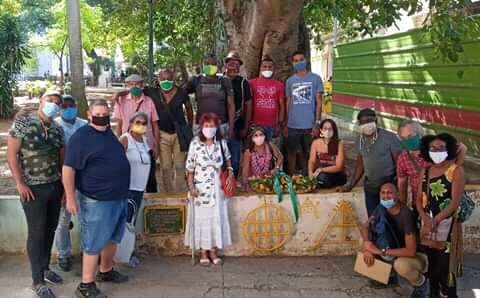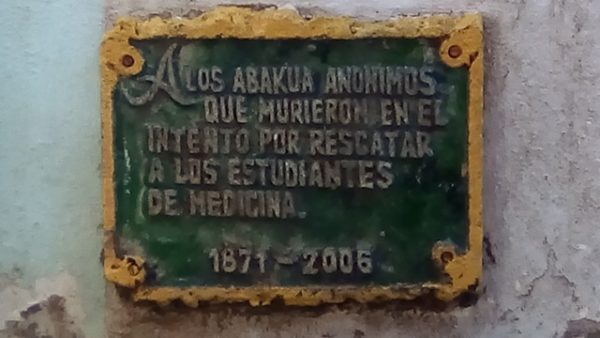The Tato Quiñones Decolonization Corner in Havana
By Regina Cano

HAVANA TIMES – Every November 27th, on the corner of Havana’s Morro and Colon streets, a group of people pay tribute to the five anonymous abakua* heroes, who defended the Medicine students who were executed by firing squad on this same date back in 1871, when the island was a Spanish colony.
This tribute has been paid by independent groups of intellectuals, independent artists, abakuas from Juegos* involved in this story, researchers, rumberos and supporters, ever since 2006. It’s an attempt to give a spotlight to these figures who were lost in oblivion.
This day of homage was added to the calendar by Tato Quiñones (Serafin Quiñones Tiant), who rescued this memory, and passed away earlier this year. The corner of Morro and Colon Streets was rebaptized in his honor, on November 27th, as: The Tato Quinones Historic Decolonization Corner, adding his name to give him recognition for his work.
Some of those present formed part of the initiative, back in 2006. People and groups who legitimize this date and place, of their own accord.
They remembered some of the different moments that led up to this gathering, and those who are now absent because of geographical distance. Likewise, those who can no longer return to this physical space. In addition to Quinones, the latter include Eduardo Djata Dieli (Eduardo Sanitesteban), Goyo (Gregorio Hernandez), Clara Napoles Cardenas, Pedrito el Yuma (Pedro Alberto Suarez) and Livan el Kaweiro.

On the wall that marks the corner, there is still an installation series of works by visual artist, Wilay Mendez Paez, which features the signatres of three abakua Juegos in the city.
One of them belongs to the Juego de los negros who perished in the attempt to save a brother from trial, while the other represents the Juego de blancos, which one of the Medicine students was proved to belong to. The third belongs to the Juego madre de ambos, sworn into abakua by Andres Facundo de los Dolores Petit, according to a bibliographical reference.
The first line on the wall reads: “November 27th 1871-2006.” Followed by the statement: “To clean the tough scab that is Colonialism – R M Villena” (Ruben Martinez Villena). Finally, you can read, in Bricamo*: ““Bongó Itá Ekue Jurakatime Akanarán Krukoró”, which means: “We are all children from the same mother,” according to people present who are adept in this language.

Notes:
“Abakuas or naningos: members of the Secret Abakua Society, of African descent, which only admitted male members. Their primary education is called “Juegos”.
*Bricamo: the language spoken by Abakuas.
*The words written in Bricamo here, have been accented according to how they are pronounced and written, for better enunciation.
